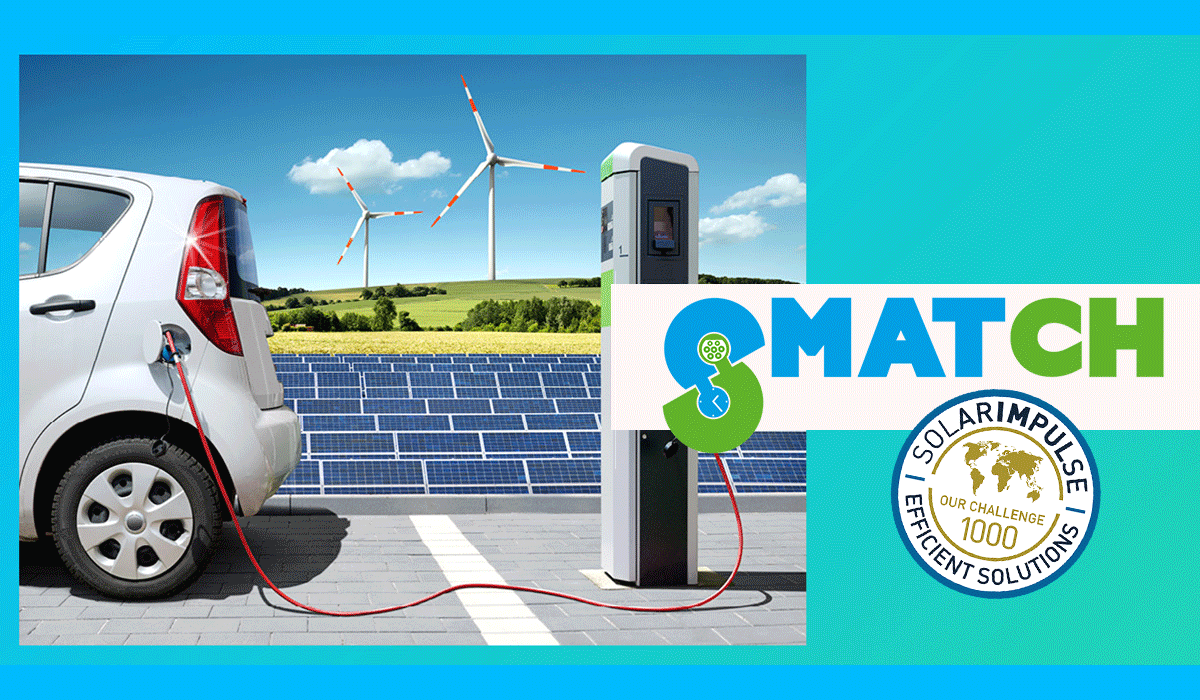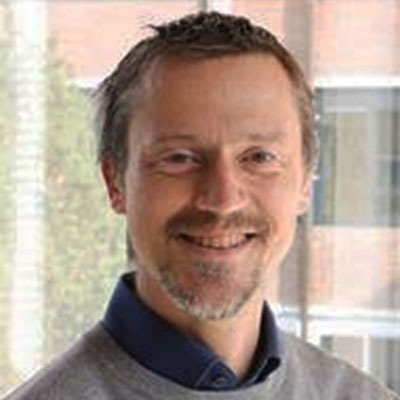


SMATCH supports ENGIE's electric mobility rollouts in its various geographical locations in France and other European countries, and we have high hopes for a Singaporean rollout in the relatively short term.
Smatch has just been awarded the “Efficient Solution” label by the Solar Impulse Foundation, joining a select club of 1,000+ clean and profitable solutions to the environmental crisis.
Laurent De Vroey : Electric mobility has changed significantly in recent years, and Smatch has supported and anticipated this change. This is particularly true for electrical stress when the number of cars needing to be charged increases. If these charges are not managed intelligently, all cars start charging simultaneously on a site that’s unprepared for it. This carries the risk of partial or total power cuts, or potential anomalies on the electric network (voltage drops, transformer overload, frequency variation, etc.). From the outset, in 2013, Smatch’s plan was to distribute power according to user needs, site limits, and many other parameters. Until 2020, we were in a pilot launch phase aimed mainly at early adopters.
Over the last two years, many of our industrial customers have started to deploy up to several hundred charge points, and Smatch has gone from being a “nice to have” project to an essential product. We have also been able to collect user feedback over this two-year period, which we use to confirm that the solution is working as it should. And we have implemented a number of functionalities in response to user requests. So customer feedback guides our product development.
SMATCH is also deployed in public settings, like in Rotterdam, where complementary goals have been implemented, such as exploiting the flexibility of a large number of electric vehicles in the energy imbalance market. It can also contribute to optimising energy costs through better anticipation and control of load curves, which helps reduce ENGIE's risks in wholesale energy markets. This is particularly useful in connection with the concession schemes favoured by ENGIE.
How has Smatch evolved over the last two years?
Over the last two years, we have moved into a scale-up, rollout phase, which has led us to change our organisation.
When moving from a few test sites to much higher volumes, we cannot rely solely on the solution’s technical developers for the rollout, as was the case in project mode. So for two years now, and even more since last year, my role has been to head up Smatch’s commercial rollout for the Energy Solutions GBU, after supervising the technical first steps at Laborelec. We needed to develop the processes, automate as many things as possible, and for example produce an operator interface that would eventually allow local players to configure Smatch independently for their customers’ sites.
For the past two years, we have also worked to optimise technical interactions with other players in the chain - both for the charging stations and the management platforms with which Smatch interacts. A number of standards are in place to facilitate these interactions, which the Smatch team plays an active role in drafting. Smatch is to some extent the “brain” of this chain. It manages the energy and power segment, which is central to ENGIE’s operations. To give an example, Smatch’s role is to ensure that sites will not bring down the network if too many vehicles charge at the same time, and also to make sure that at the end of the day, users have been able to charge their cars as needed. Despite the increasing visibility, electric mobility is still an emerging market. For Smatch to be at its most effective, a clear technical and contractual framework needs to be established so that each contributor in the chain can play its part in a coordinated, uninterrupted way. This is an area that we are currently working on.
And in years to come?
In coming years, volumes will continue to increase significantly (the number of electric vehicles, the need for smart charging, etc.). We already know that Smatch will have an important role to play, and it will have to be ready. This is what we have been working towards over the last two years. As pioneers in developing the product, we have been able to fix “teething problems” and lay the ground in a market where same-segment competition risks relatively high barriers to entry.
On the technical and functional side, a genuine differentiating factor is the solution’s robustness, as revealed by a recent independent audit. Implementing business processes will allow us to translate our achievements to date into far into larger volumes. This is our main focus at the moment.
SMATCH supports ENGIE's electric mobility rollouts in its various geographical locations. France is currently the largest target market. But we are also present in other European countries, and we have high hopes for a Singaporean rollout in the relatively short term.
Do you know what led to Smatch receiving the Solar Impulse label?
We were first spotted by Solar Impulse after winning an ENGIE Innovation Trophy in 2020. Our initial application for the Solar Impulse label was rejected, as the business model was not sufficiently mature. A lot has changed in two years, and we now have a much stronger value proposition.
A strong interest in electric mobility solutions is something that we share with Solar Impulse – it was they who came back to us. We submitted a new application and this time we were selected.
Better still, Solar Impulse has just launched a "Ready to vote" initiative with 50 proposals for the energy transition. Smatch was selected for its “vehicle to grid” proposal offering electric vehicles the chance to return energy to the network, increasing flexibility. This is something SMATCH has the capacity to do. However, it is yet to be widely implemented as there are relatively few charging stations and cars able to use this functionality, and insufficient commercial demand. But the day a customer asks us for it, we are ready!
What are your expectations for the Solar Impulse label?
For me, it is primarily a guarantee of the solution's reliability. Externally, the label guarantees both that the solution makes economic sense, and, from an environmental standpoint, that it meets the needs of the zero carbon transition. Our application was approved by independent experts: the label confirms that we are not alone in thinking our approach is the right one!
Since obtaining the label in July (2022) we have mentioned it in all our communications to prospective or existing customers. We expect it to give us some extra credibility. We obtained the Label very recently, so we have not had a chance to see its true impact. But I’m certain there will be one!
So in the end it's a great story! The Innovation Awards, the Solar Impulse label...! What’s next?
Yes, it’s a great story! Our biggest challenge now is to support ENGIE’s local entities. Launching new businesses is never easy, and that also applies to electric mobility. Smatch is a solution with many benefits for businesses; but they are not always aware of it.
We have a lot to do in terms of training and support, and these are areas that we are currently working on. Smatch is a solution that works. It has proven itself in terms of both quality and meeting customer needs. It can be implemented in its present state, without complications or extra effort required from BUs.
This is a feature common to all good, new solutions. It’s not enough to that it is useful and it works. People need to know about it and be encouraged to adopt it. But in this sense Smatch is like the electric car: once you have it, you can’t live without it.
As electric mobility is on the rise, parking lots and public streets are increasingly equipped with charging infrastructures. Additional energy and power needs may become critical if not properly managed. SMATCH by ENGIE handles EV charging so to avoid electrical reinforcement while delivering the optimal charging experience to each EV driver. SMATCH manages the charging speed of each car so that the physical constraints and site-specific priority rules are respected, and each user’s needs are taken in consideration. In addition, SMATCH is capable to respond to specific needs of the grid operators by raising/reducing the charging speed, or even injecting energy on the grid (also called “V2G”) so to keep the equilibrium between consumption and production, with invisible impact on the driver's charging comfort.
SOLUTIONS EXPLORER : The Solar Impulse Foundation proposes 1000+ solutions to help political and decision makers meet more ambitious climate targets without compromising economic growth. ENGIE’s Zero-Carbon solutions are among the innovative solutions proposed.